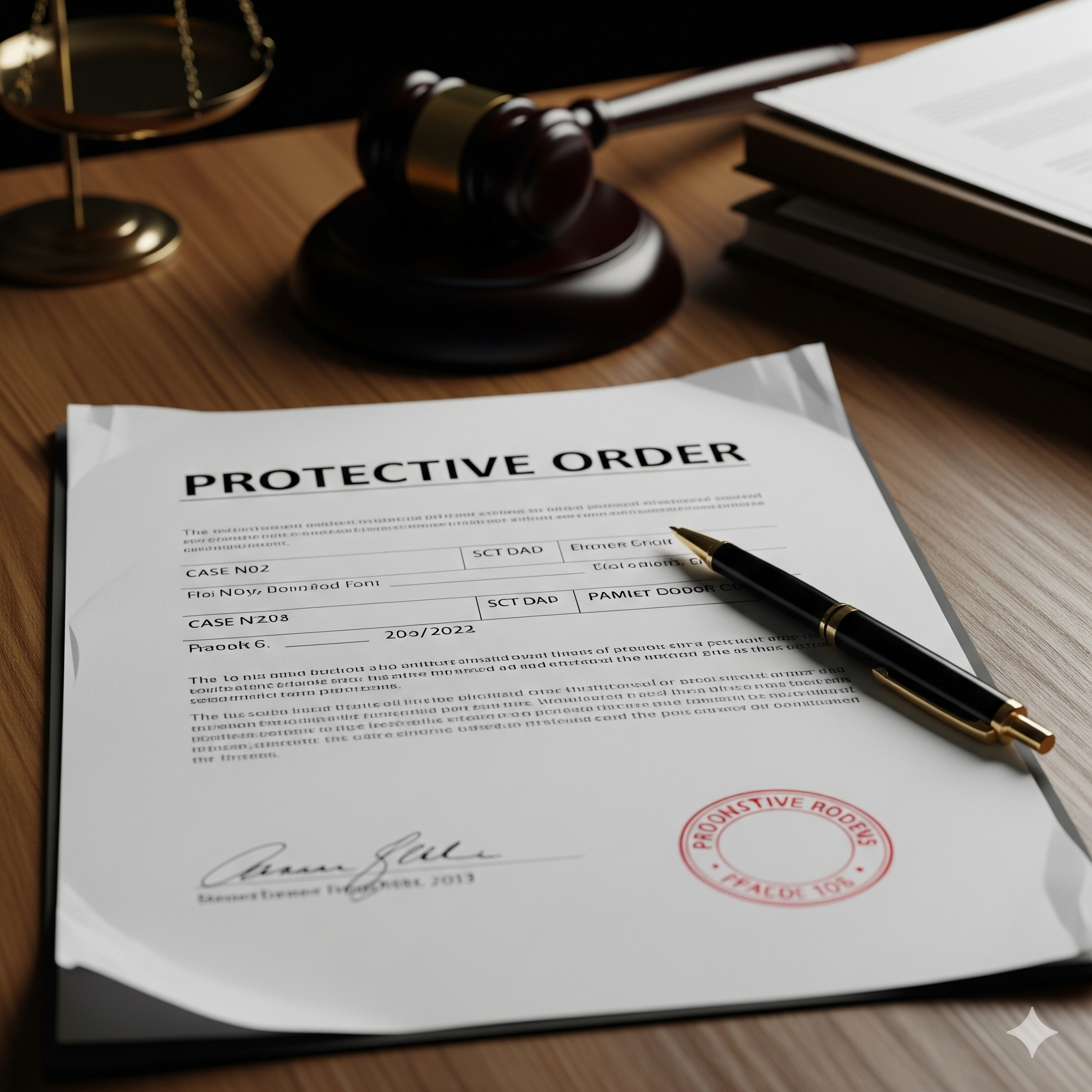When individuals face the difficult process of contesting a protective order in Oregon, the stakes are incredibly high. Protective orders can have immediate consequences on where a person lives, how they interact with loved ones, and even their reputation in the community. Because of this, any misstep during the process can make the difference between a successful challenge and long-term restrictions. While the law provides the opportunity to dispute such orders, it also demands strict compliance with procedural and evidentiary rules. Understanding the most common mistakes can help ensure that the case is presented as clearly and effectively as possible.
Misunderstanding the Legal Standard When Contesting a Protective Order in Oregon
One of the most frequent mistakes people make when contesting a protective order in Oregon is misunderstanding the legal threshold applied by the court. A protective order is not granted automatically; the petitioner must show that statutory requirements are met. However, many respondents assume that their mere denial of the allegations is enough to persuade the judge.
In reality, Oregon courts often rely on a “preponderance of the evidence” standard in these hearings, meaning the judge evaluates whether the petitioner’s claims are more likely true than not. If the respondent comes unprepared to counter specific allegations with evidence, the court may uphold the order even in the absence of strong proof. Misjudging this standard and failing to bring relevant documentation or testimony is a critical mistake that weakens a defense from the start.
Failing to Understand the Consequences of a Protective Order
Another significant error in contesting a protective order in Oregon is underestimating the long-term impact of the order itself. A granted order does more than prevent contact; it can affect employment opportunities, housing eligibility, and professional licensing. Some individuals mistakenly treat the matter as a minor civil dispute, not realizing that violation of the order could lead to criminal charges.
According to the Oregon Judicial Department, violating a restraining or protective order is a criminal offense that carries serious penalties. By failing to recognize the severity of the consequences, respondents may approach the hearing casually rather than with the preparation such a matter demands. The oversight of these repercussions often results in poor planning, limited evidence gathering, and missed opportunities to challenge the claims effectively.

Ignoring Procedural Rules When Contesting a Protective Order in Oregon
Protective order hearings follow specific procedural rules, and failing to adhere to them is one of the most damaging mistakes respondents can make. This includes missing deadlines to request a contested hearing, neglecting to properly serve documents, or failing to bring admissible evidence to court.
The Oregon court system provides clear procedural guidelines, but many respondents overlook them, assuming the judge will simply “hear them out.” Instead, a court may dismiss or disregard improperly submitted evidence, leaving the respondent without a defense. Ensuring compliance with these procedures is a critical part of success in the process of contesting a protective order in Oregon.
Arriving at the Hearing Without Supporting Evidence
A common and highly damaging mistake in contesting a protective order in Oregon is relying solely on verbal testimony without bringing documentation or corroborating witnesses. Courts rely on concrete evidence, and the petitioner often arrives with detailed accounts, text messages, photographs, or witness statements. When the respondent arrives without comparable evidence, the judge may perceive the petitioner’s story as more credible.
Supporting evidence can take many forms, including communications that contradict the petitioner’s claims, records showing lack of contact, or testimony from neutral third parties. Overlooking the importance of presenting such proof places the respondent at a significant disadvantage and undermines the defense.
Overreacting or Becoming Confrontational in Court
Courtroom demeanor is another area where mistakes frequently occur during contesting a protective order in Oregon. Respondents sometimes allow emotions to take control, leading them to argue aggressively, interrupt the judge, or confront the petitioner directly. This conduct can influence the court’s perception and reinforce the petitioner’s claims of intimidation or harassment.
Judges expect professionalism and restraint. Even if the respondent feels wrongly accused, maintaining composure is essential. Overreacting in front of the judge risks overshadowing valid legal arguments and evidence, making it harder to convince the court that the order is unnecessary.
Overlooking the Internal Structure of a Contested Hearing
A protective order contested hearing in Oregon follows a structured process, and misunderstanding this sequence is another common pitfall. Each party is given the chance to present evidence, examine witnesses, and provide closing statements. Respondents who come unprepared for this structure may miss their opportunity to properly challenge evidence or question the petitioner’s account.
Detailed guidance on this process is available through legal resources, including the Oregon Judicial Department’s materials on restraining orders. Understanding the structure of the hearing allows the respondent to anticipate when and how to present their case most effectively. A clear grasp of these stages prevents missed opportunities that could otherwise influence the outcome.

Not Reviewing the Petition Before the Hearing
Another critical error when contesting a protective order in Oregon is failing to carefully review the initial petition. The protective order petition typically outlines the petitioner’s claims in detail, providing insight into the arguments they intend to make at the hearing. By neglecting to analyze these claims, respondents may walk into court unprepared to refute specific allegations.
Careful review allows respondents to identify inconsistencies, gather evidence directly related to the claims, and anticipate questions the judge may ask. Overlooking this step results in vague responses and an inability to effectively counter the petitioner’s assertions.
Misusing the Internal Link on Contesting a Protective Order in Oregon
When individuals are unfamiliar with the specific process of a contested hearing, they often fail to understand the nuances that can determine the outcome. Detailed guidance on the anatomy of a contested hearing when contesting a protective order in Oregon provides valuable insights into what to expect. Without awareness of these steps, respondents are more likely to commit procedural mistakes that affect the court’s decision.
Believing the Protective Order Cannot Be Contested
Some individuals mistakenly believe that once a protective order has been granted, it cannot be challenged. This misconception leads them to forgo the contested hearing entirely. In Oregon, however, respondents have the statutory right to request such a hearing within a limited timeframe. Missing this opportunity is one of the most serious mistakes in the process.
By assuming the order is final and uncontestable, respondents surrender their chance to present evidence, clarify misunderstandings, and potentially have the order dismissed. Awareness of this right is crucial for anyone facing the burdens of a protective order.
Overlooking Government Resources and Statutory Guidance
Failing to consult official resources is another mistake often made in contesting a protective order in Oregon. Oregon statutes and judicial resources provide clear instructions about protective order procedures, including timelines, filing requirements, and standards of review. For example, the Oregon Judicial Department publishes direct guidance on protective order processes. Ignoring these resources means missing out on crucial procedural knowledge that can impact the hearing.

Conclusion
When navigating the serious process of contesting a protective order in Oregon, the difference between success and failure often lies in preparation and awareness. Missteps such as misunderstanding the legal standard, ignoring procedural rules, failing to bring evidence, or underestimating the hearing’s structure can have lasting consequences. A protective order has far-reaching impacts on personal, professional, and legal aspects of life, making it critical to avoid these common mistakes. By recognizing these pitfalls and approaching the process with diligence, individuals improve their ability to present a clear and structured defense before the court.
